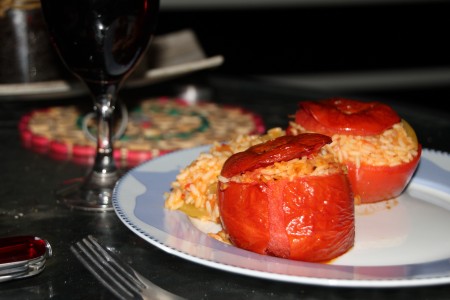What are Probiotics?
No doubt – acidophilus and other probiotic bacteria do help digestion and strengthen the immunity.
However, an important note to bear in mind: No amount of probiotic supplements or yoghurt will help you if you have an allergy to milk, or wheat and you are still using these products.
This is because the bowels become clogged with mucous if you do not digest these foods, which are often problematic, properly.
The mucous lining the bowel will prevent the probiotics from doing their good job, and the mucous will also harbour intestinal parasites, which will further weaken your digestion and your immune system.
So – I have one major reservation about the value of taking probiotics. I think that they are generally over-rated. People often want that quick-fix without making any radical changes to the diet, and so everybody goes overboard about taking probiotic supplements, or probiotic yoghurt.
If you really want to get the full effect from taking probiotics, then give up wheat, sugar and milk.
The word probiotic is derived from Greek roots. Pro means ‘supporting’ or ‘pro’, ‘for’; and ‘biotic’ means life. The word Probiotcs means anything, really, which is supportive of life.
When we talk about food supplements and ‘probiotics’, we usually think about the special brands of yogurt which contain those specific cultures of beneficial bacteria which are probiotic. Or we might bring to mind the various supplements containing probiotics which we see in our favorite health food shop.
Although the term probiotics is one which has only recently been applied to the beneficial cultures used in yogurt making today, and which are found in some other fermented foods, and nutritional supplements, the therapeutic value of the lactobacillus probiotic has actually been known for centuries.
Yogurt is still, and always has been, an important part of the diet in many places of the world. Today, yogurt with added probiotics is also becoming a very popular addition to the Western diet because of the nutritional boosts this gives us.
Note: If you have a sensitivity to dairy products, or you are suffering a candida infection, then you should go to see your health practitioner for advice. Probiotics can be helpful in many conditions, but a professional opinion should be sought.
There are a variety of culures of bacteria which can be added to milk to make yogurt: Of the many and various cultures known by scientists, we will outline some of the most commonly used strains, those which have been proven to enhance health, in this article.
Yogurt making is a skill which will preserve fresh milk in the hot places of the world where the milk would otherwise ‘go off’ very quickly. This is one beneficial aspect of yogurt making, and the lactobacillic organism.
However, the other important factor, which is why yogurt, and other fermented foods like sauerkraut have remained so popular in many parts of the world, is because these foods which have been fermented with special cultures of bacteria- probiotics – have definite health giving effects.
What are the Main Benefits of Probiotics?
- Two of the main benefits of probiotics are that your digestion will improve, and your immune system will become stronger. A stronger immune system means that you will have improved resistance to disease. It has been scientifically illustrated, also, that lactobacilli work a little like a natural antibiotic because they possess the ability to kill some unfriendly bacteria which cause certain diseases.
- There are other health-giving attributes to be had if you use probiotics, or specific fermented foods on a daily basis. One important benefit from using probiotics is that your digestion of fats and proteins is improved.
- Another is that you have better absorption of the minerals and vitamins in your food: Probiotics help to keep your intestinal flora healthy, and this is why the absorption of minerals and vitamins is improved. Healthy intestinal flora also assists in the manufacture of certain vitamins and enzymes in the bowel.
- Another health bonus from including lactobacillus probiotics in your daily diet, is that your cholesterol levels will most likely be lowered. This cholesterol-lowering effect gained from using lactobacillus in the diet will be enhanced, of course, by the eating of plenty of high fiber foods.
- Certain probiotics enhance the body’s ability to manufacture Vitamin B and Vitamin K in the body, as well as Biotin.
- Some people who are otherwise intolerant to the lactose in milk find that their sensitivities are reduced when acidophilus/or bifidus or other probiotics are added to the diet. Some people are able to digest yogurt which has been treated with special cultures, whereas they still cannot digest unfermented milk properly.
Now, the benefits of probiotics have been proven scientifically by many researchers. Dr Khem Shahani, Ph.D is one emminent doctor who has devoted his life’s work and his research almost specifically to the topic of organisms and their effect on health, such as the Lactobacillus acidophilus strain, and the Lactobacillus bifidus, otherwise known as bifidobacterium bifidum. Dr Shahani emphasises that our good health is really dependent upon these two organisms. This is no quackery – Dr Khem Shahani has worked as an advisor to the World Health Organisation.
Khem Shahani’s latest book is entitled ‘Cultivate Health From Within’ – Dr Shahani’s Guide to Probiotics. This book gives much detailed information on the benefits of probiotics to your health and how probiotics help promote longevity. This book is a fairly recent one, published in 2005 by Vital Health Publishing, Danbury, CT 06811.
The Bifidobacterium bifidum organism lives primarily in the large intestine and colon. The Lacto acidophilus lives mainly in the small intestine, although it is also found in the large intestine and colon, though in smaller numbers. These two work together synergistically in maintaining good digestion and elimination of waste products.
You can help proliferate the Lacto acidophilus bacteria in the small intestines by eating fermented foods like yogurt, sauerkraut, umeboshi plums, tempeh and miso. If you are to get the benefit of either the Lacto acidophilus, or the Bifidobacterium organism from eating yogurt, though, you have to buy a product which advertises the probiotics on the packaging. Otherwise, you might be eating a yogurt which has been pasteurised, and this means that the beneficial organisms such as the Lacto acidiophilus, or L. bifidus, will have been killed off. These organisms need to be live in the food you eat, or in the supplement which you take, to enable them to proliferate in the intestines.
Why Do We Need To Consider Supplementing Our Diets With Probiotics?
Many things in our environment interfere with our digestion and our body’s ability to keep the intestinal flora in a proper, healthy balance.
Here are some of the main things which upset the intestinal flora, which in turn affects our immunity and our ability to process food and manufacture vitamins:
- Antibiotics. (Note – sometimes antibiotics are necessary and will save a life. See your health practitioner or your doctor if you have a health complaint) These are one of the worst things for interfering with digestion. Antibiotics readily kill off the beneficial bacteria in the bowel. The trouble is, that even if you do not take allopathic medications, antibiotics find their way into our bodies because the animals we eat have been fed antibiotics.
- Milk is contaminated with antibiotics too, as the cows which produce our milk for us are treated regularly with antibiotics.
- Eggs, unless they are certified organic, will have quantities of antibiotics and hormones in them. It is important, for the sake of our health and that of our children, therefore, to find organic sources for our milk and our meats and eggs.
- If you take a probiotic after a course of necessary antibiotics, then your intestinal flora will quickly be restored. A Probiotic will help alleviate the negative side- effects of the antibiotic.
- Drinking too much coffee, alcohol, and smoking, will deplete the supply of healthy bacteria in the bowel.
- Radiation, such as living too close to intense power sources and cell phone towers, or sleeping next to the meter box at your house, or the television, will affect the delicate balance of your intestinal flora.
- Insectides and herbicides also harm your intestinal flora.
- Medications such as the pill, and blood thinners, will affect your intestinal flora.
- Read merrilyn’s other post on probiotics entitled Probiotic Advantage.



